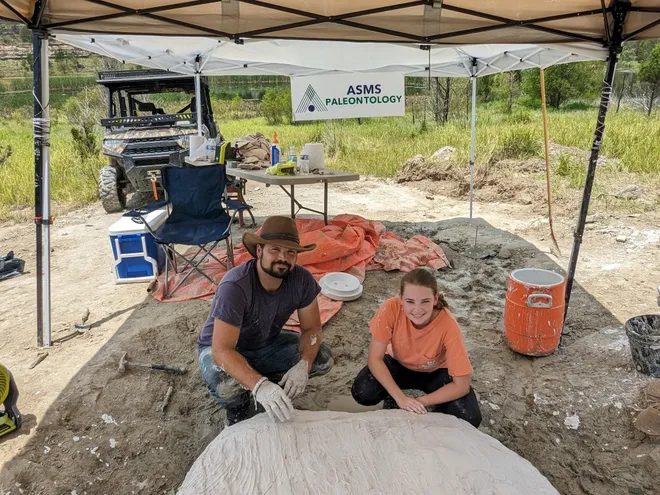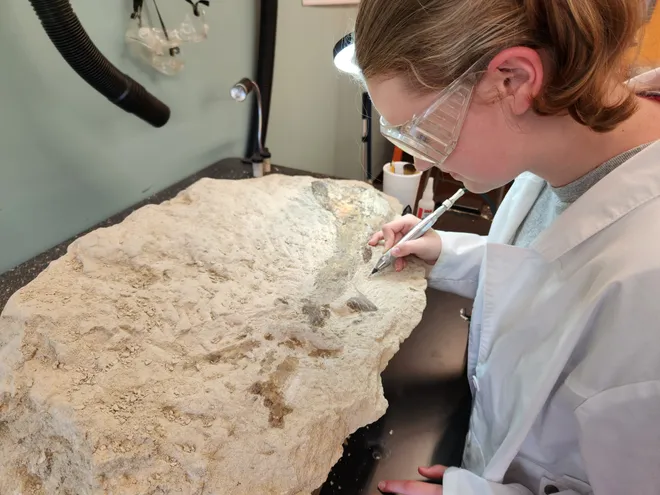A whale of a discovery: Alabama teen, teacher discover 34-million-year-old whale skull

An Alabama teen looking for fossils on her farm stumbled across a massive discovery: A 34-million-year-old whale skull.
Lindsey Stallworth, a junior at the Alabama School of Math and Science in Mobile, Alabama, had been collecting fossils on her family's farm, about 80 miles north of Mobile, for as long as she can remember. She would pick up shark teeth and fossil shells, "but we never knew anyone that could tell us anything about them," Stallworth said in a news release from the school.
The 16-year-old brought a few of her discoveries to a biology teacher, Drew Gentry, a paleontologist who has studied Alabama fossils since his childhood.
“I immediately recognized one of the fossil shark teeth Lindsey showed me,” Gentry said in the release, “and I wanted to know more about where she found it.”
More:Did you know most states have an official dinosaur or fossil? It's true! Here's yours.
A bigger discovery

Gentry traveled to the farm over the summer hoping to find out more about the shark teeth, but instead made a much bigger discovery.
After only a few hours on the property, Gentry said he noticed tiny pieces of fossilized bone over a small hillside, and when he followed them, they "led right to several large bones eroding out of the soil."
He didn't know it at first, but the the bones turned out to be from a whale.
The teacher, student and a few helpers spent most of June and July excavating some of the remains and taking them back to a paleontology lab at the Alabama School of Math and Science for more study.
Gentry told AL.com that the whale appears to be a smaller relative of Basilosarurus cetoides, an ancient whale and Alabama's state fossil, and could be related to zygorhiza, a smaller whale that has been found in Alabama, Mississippi and Louisiana.
Pharaoh of a whale:Smallest-ever ‘King Tut’ fossil found in Egypt
Further excavation
The whale, which could be the first of its kind found in Alabama, is estimated to be about 20 feet long and could take three to four years to fully excavate.
Jun Ebersole, director of collections at the McWane Science Center in Birmingham, confirmed to The Washington Post that the whale skull is around 34 million years old.
“It’s really hard to comprehend something that’s that many millions of years old, but it started to make more sense once we started getting the dirt away and saw what the skull might have looked like,” Stallworth told the Post.
Due to the whale's size, the team has so far only recovered the skull, but Gentry said he plans to return to Stallworth's farm next summer to continue the excavation.
Disclaimer: The copyright of this article belongs to the original author. Reposting this article is solely for the purpose of information dissemination and does not constitute any investment advice. If there is any infringement, please contact us immediately. We will make corrections or deletions as necessary. Thank you.




